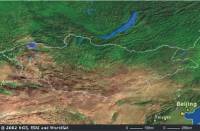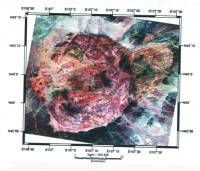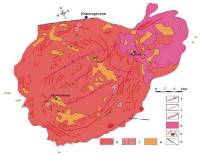Special Program for International Students
GRADUATE COURSE IN EARTH SCIENCE
& GEOENVIRONMENTAL SCIENCE
Current MEXT students
Amar-Amgalan Serjlhumbe (Mongolia)
Email: amraa_c @yahoo.com
Thesis title: Petrology and geochemistry of the Hanbogd alkaline pluton, South Mongolia
Supervisor: Prof. S. Iizumi (2002-2004).
The Hanbogd alkaline intrusion is located in the South Gobi district, 650 km south
of Ulaanbaatar city. The Hanbogd intrusion has a unique composition, with extremely interesting
rare metal mineralization, including Zr, Nb and REE. It is known as the site
of new mineral discoveries like mongolite and armstrongite. Another new discovery,
the Ouy Tolgoi Cu-Au porphyry deposit, is located just south of the Hanbogd pluton.
Satellite images facilitate understanding of the shape and internal structure of the Hanbogd intrusion.
The intrusion consists of two circular bodies: western (30 km in diameter) and eastern
(14 km in diameter).
K–Ar ages range from 245 to 362 Ma, and the Rb-Sr age is 286 Ma (Vladykin et al., 1981)
Mineralogically, the Hanbogd pluton consists of two main phases and four dike formations.
Regarding the intrusion structures, Kheraskov (1985) interpreted the Hanbogd intrusion as
a ring caldera structure. Garamjav (1996) proposed a spiral-vertical structure for
the Hanbogd intrusion based on geological, satellite and airborne image data.
Many Russian and Mongolian geologists have examined the mineralogy of Hanbogd intrusion in detail,
but the petrology and geochemistry of alkaline rocks is still poorly studied.
The aim of my study is improve our understanding of the origin of the Hanbogd intrusion, by establishing the genetic relationships between the various intrusive rocks. This will include building a model for the Hanbogd intrusion based on new petrological and geochemical data, including major and trace elements, REE, and isotopes.




